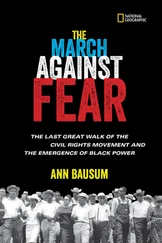Bill Bryson - A Walk In The Woods
Здесь есть возможность читать онлайн «Bill Bryson - A Walk In The Woods» весь текст электронной книги совершенно бесплатно (целиком полную версию без сокращений). В некоторых случаях можно слушать аудио, скачать через торрент в формате fb2 и присутствует краткое содержание. Жанр: Современная проза, на английском языке. Описание произведения, (предисловие) а так же отзывы посетителей доступны на портале библиотеки ЛибКат.
- Название:A Walk In The Woods
- Автор:
- Жанр:
- Год:неизвестен
- ISBN:нет данных
- Рейтинг книги:4 / 5. Голосов: 1
-
Избранное:Добавить в избранное
- Отзывы:
-
Ваша оценка:
- 80
- 1
- 2
- 3
- 4
- 5
A Walk In The Woods: краткое содержание, описание и аннотация
Предлагаем к чтению аннотацию, описание, краткое содержание или предисловие (зависит от того, что написал сам автор книги «A Walk In The Woods»). Если вы не нашли необходимую информацию о книге — напишите в комментариях, мы постараемся отыскать её.
A Walk In The Woods — читать онлайн бесплатно полную книгу (весь текст) целиком
Ниже представлен текст книги, разбитый по страницам. Система сохранения места последней прочитанной страницы, позволяет с удобством читать онлайн бесплатно книгу «A Walk In The Woods», без необходимости каждый раз заново искать на чём Вы остановились. Поставьте закладку, и сможете в любой момент перейти на страницу, на которой закончили чтение.
Интервал:
Закладка:
Each night, we stopped in leaky cow barns and cooked and lived with strangers-crowds of them, all cold and damp and shuffling, gaunt and half mad from the ceaseless rain and the cheerlessness of wet hiking. It was awful. And the worse the weather got, the more crowded the shelters grew. It was spring break at colleges all over the East, and scores and scores of young people had had the idea to come hiking in the Smokies. The Smokies shelters are supposed to be for thru-hikers, not casual drop-ins, and words were sometimes exchanged. It was not like the AT at all. It was worse than awful.
By the third day, Katz and I both had nothing dry and were shivering constantly. We slopped up to the summit of Clingmans Dome-a high point of the trip, by all accounts, with views in clear weather to make the heart take wing-and saw nothing, nothing whatever but the dim shapes of dying trees in a sea of swirling fog.
We were soaked and filthy, desperately needed a launderette, clean, dry clothes, a square meal, and a Ripley’s Believe It or Not Museum. It was time to go to Gatlinburg.
Chapter 8
But first we had to get there.
It was eight miles from Clingmans Dome to U.S. 441, the first paved road since Fontana Dam four days before. Gatlinburg lay fifteen long, twisting, downhill miles to the north. It was too far to walk, and it didn’t seem likely that we would get a lift hitching in a national park, but in a parking area nearby I noticed three homeward-bound youths loading packs into a large, fancy car with New Hampshire license plates, and impulsively I went and introduced myself to them as a fellow citizen of the Granite State and asked them if they could find it in their hearts to take two weary old guys into Gatlinburg. Before they could demur, which was clearly their instinct, we thanked them profusely and climbed into the back seat. And thus we secured a stylish but rather sullen passage to Gatlinburg.
Gatlinburg is a shock to the system from whichever angle you survey it, but never more so than when you descend upon it from a spell of moist, grubby isolation in the woods. It sits just outside the main entrance to Great Smoky Mountains National Park and specializes in providing all those things that the park does not-principally, slurpy food, motels, gift shops, and sidewalks on which to waddle and dawdle-nearly all of it strewn along a single, astoundingly ugly main street. For years it has prospered on the confident understanding that when Americans load up their cars and drive enormous distances to a setting of rare natural splendor what most of them want when they get there is to play a little miniature golf and eat dribbly food. Great Smoky Mountains National Park is the most popular national park in America, but Gatlinburg-this is so unbelievable-is more popular than the park.
So Gatlinburg is appalling. But that’s OK. After eight days on the trail, we were ready to be appalled, eager to be appalled. We checked into a motel, where we were received with a palpable lack of warmth, got honked at twice as we crossed Main Street (one rather loses the knack of crossing roads on the trail), and finally presented ourselves at an establishment called Jersey Joe’s Restaurant, where we ordered cheeseburgers and Cokes from a charm-less, gum-popping waitress who declined to be heartened by our wholesome smiles. We were halfway through this simple, disappointing repast when the waitress dropped the bill on the table as she passed. It came to $20.74.
“You’re joking,” I spluttered.
The waitress-let’s call her Betty Slutz-stopped and looked at me, then slowly swaggered back to the table, staring at me with majestic disdain the while.
“You got a problem here?”
“Twenty dollars is a bit much for a couple of burgers, don’t you think?” I squeaked in a strange, never-before-heard Bertie Wooster voice. She held her stare for another moment, then picked up the bill and read it through aloud for our benefit, smacking each item as she read: “Two burgers. Two sodas. State sales tax. City sales tax. Beverage tax. Nondiscretionary gratuity. Grand total: twenty dollars and seventy-four cents.” She let it fall back onto the table and graced us with a sneer. “Welcome to Gatlinburg, gentlemen.”
Welcome, indeed.
And then we went out to see the town. I was particularly eager to have a look at Gatlinburg because I had read about it in a wonderful book called The Lost Continent. In it the author describes the scene on Main Street thus: “Walking in an unhurried fashion up and down the street were more crowds of overweight tourists in boisterous clothes, with cameras bouncing on their bellies, consuming ice-creams, cotton candy, and corn dogs, sometimes simultaneously.” And so it was today. The same throngs of pear-shaped people in Reeboks wandered between food smells, clutching grotesque comestibles and bucket-sized soft drinks. It was still the same tacky, horrible place. Yet I would hardly have recognized it from just nine years before. Nearly every building I remembered had been torn down and replaced with something new-principally, mini-malls and shopping courts, which stretched back from the main street and offered a whole new galaxy of shopping and eating opportunities.
In The Lost Continent I gave a specimen list of Gatlinburg’s attractions as they were in 1987-the Elvis Presley Hall of Fame, National Bible Museum, Stars Over Gatlinburg Wax Museum, Ripley’s Believe It or Not Museum, American Historical Wax Museum, Gatlinburg Space Needle, Bonnie Lou and Buster Country Music Show, Carbo’s Police Museum, Guinness Book of Records Exhibition Center, Irlene Mandrell Hall of Stars Museum and Shopping Mall, a pair of haunted houses, and three miscellaneous attractions, Hillbilly Village, Paradise Island, and World of Illusions. Of these fifteen diversions, just three appeared to be still in existence nine years later. They had of course been replaced by other things-a Mysterious Mansion, Hillbilly Golf, a Motion Master ride-and these in turn will no doubt be gone in another nine years, for that is the way of America.
I know the world is ever in motion, but the speed of change in the United States is simply dazzling. In 1951, the year I was born, Gatlinburg had just one retail business-a general store called Ogle’s. Then, as the postwar boom years quickened, people began coming to the Smokies by car, and motels, restaurants, gas stations, and gift shops popped up to serve them. By 1987, Gatlinburg had sixty motels and 200 gift shops. Today it has 100 motels and 400 gift shops. And the remarkable thing is that there is nothing remotely remarkable about that.
Consider this: Half of all the offices and malls standing in America today have been built since 1980. Half of them. Eighty percent of all the housing stock in the country dates from 1945. Of all the motel rooms in America, 230,000 have been built in the last fifteen years. Just up the road from Gatlinburg is the town of Pigeon Forge, which twenty years ago was a sleepy hamlet-nay, which aspired to be a sleepy hamlet-famous only as the hometown of Dolly Parton. Then the estimable Ms. Parton built an amusement park called Dollywood. Now Pigeon Forge has 200 outlet shops stretched along three miles of highway. It is bigger and uglier than Gatlinburg, and has better parking, and so of course gets more visitors.
Now compare all this with the Appalachian Trail. At the time of our hike, the Appalachian Trail was fifty-nine years old. That is, by American standards, incredibly venerable. The Oregon and Santa Fe trails didn’t last as long. Route 66 didn’t last as long. The old coast-to-coast Lincoln Highway, a road that brought transforming wealth and life to hundreds of little towns, so important and familiar that it became known as “America’s Main Street,” didn’t last as long. Nothing in America does. If a product or enterprise doesn’t constantly reinvent itself, it is superseded, cast aside, abandoned without sentiment in favor of something bigger, newer, and, alas, nearly always uglier. And then there is the good old AT, still quietly ticking along after six decades, unassuming, splendid, faithful to its founding principles, sweetly unaware that the world has quite moved on. It’s a miracle really.
Читать дальшеИнтервал:
Закладка:
Похожие книги на «A Walk In The Woods»
Представляем Вашему вниманию похожие книги на «A Walk In The Woods» списком для выбора. Мы отобрали схожую по названию и смыслу литературу в надежде предоставить читателям больше вариантов отыскать новые, интересные, ещё непрочитанные произведения.
Обсуждение, отзывы о книге «A Walk In The Woods» и просто собственные мнения читателей. Оставьте ваши комментарии, напишите, что Вы думаете о произведении, его смысле или главных героях. Укажите что конкретно понравилось, а что нет, и почему Вы так считаете.












